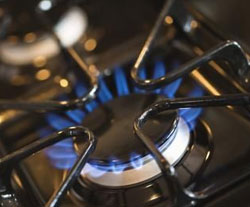
Categories
- Home
- Gas Ventilation Explained
- Commercial Gas Ventilation
- Gas Range Ventilation Requirements
- Gas Ventilation Information
- Gas Ventilation Inspection
- Gas Ventilation Regulations
- Gas Ventilation Reviews
- Gas Ventilation Safety
- Gas Ventilation System
- Home Gas Ventilation
- Rated Gas Ventilation
- Why Do We Need Gas Ventilation
- Gas Ventilation Explained
- Gas Ventilation Suppliers
- Types Of Gas Ventilation
Gas Range Ventilation Requirements
The combustion of gas can produce heat and certain unwanted gases if it doesn’t burn properly. Consequently, the oil on your gas range that gets evaporated from the frying pan also escapes in the room and makes the air stale and stuffy. The lack of proper ventilation can cause all the grease to build up in the room, thereby making the area habitable for germs and mildew. It’s essential that youbecome acquainted with your local gas range ventilation requirements because inadequate ventilation can lead to fines and potential threats to your health.
Gas Range Ventilation Requirements for Various Gas Stoves
- Direct vent fireplace or stove: This kind of stove doesn’t have a conventional chimney so it requires a closely placed hole for combusted gases to escape. It’s the safest method of ventilation becauseair is neither polluted nor is it drawn from the room due to the burning. Gas range ventilation requirements state that these stoves are made of two pipes that are placed one inside other, where the outer tube draws fresh air for combustion, whereas the inner one gives out the combusted air.
- Top vent gas fireplaces and stoves: As the name implies, this type of ventilation system requires a chimney or specific aluminum gas pipes. The primary gas range ventilation requirement for this is a 4” to 8” diameter pipe for proper draining, which needs to flow away of the semi-combusted products. Basically, you can install a top vent gas fireplace with a budget of about $2,800, but if you want to add more sophisticated features, then you can go install thermostats or remotes, to control the temperature.
- Vent less fire place and stoves: This is one of the newest technologies that have hit the market, wheregas range ventilation requirements don’t include an actual vent or chimney. Moreover, after reviewing the specific guidelines, you can install this system at competitive rates starting at about $400 and onwards.
Additional General Requirements
The basic gas range ventilation requirement for the majority of stove models, states that the range area itself should be a little wider than the cook top surface. The suction force or fan power, also referred to as CFM, should be able to match the British Thermal Units [BTU] well. Perhaps you have heard the term BTU to describe the power of air conditioning units; well, as a standard 100BTUs need 1CFM airflow. In layman’s terms, one meter cube of gas needs ten meter cubes of air for complete combustion.
Choosing Hoods for Your Range
- Wall- Mounted Hoods
- Downdraft Range Hoods
- Duct Routing
- Recirculating Hoods
To begin with the most popular option is that of a wall mounted gas range hood that is attached to the wall, and is situated directly over the oven. Perhaps the main reason for this is the fact that the gas range ventilation requirements associated with it are quite simple and easy to follow. Moreover, the downdraft range hood is used when a mounted range hood is not required. In general, it’s essential to meet all the gas range ventilation requirements if you want to ensure the safety of your home.
